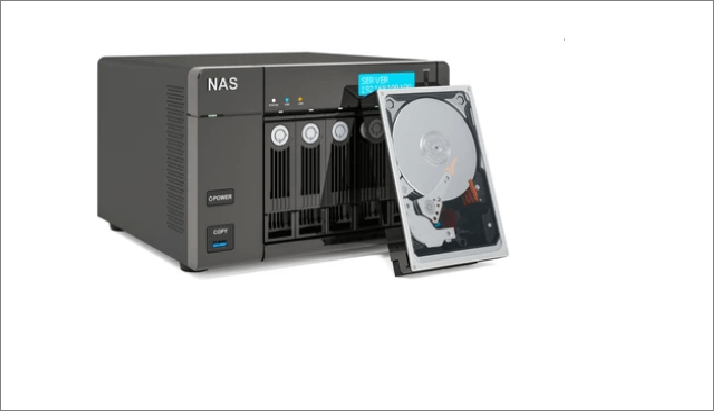Situatie
Network-attached storage (NAS) is a file-level (as opposed to block-level storage) computer data storage server connected to a computer network providing data access to a heterogeneous group of clients.
Solutie
A NAS device is optimised for serving files either by its hardware, software, or configuration. It is often manufactured as a computer appliance – a purpose-built specialized computer. NAS systems are networked appliances that contain one or more storage drives, often arranged into logical, redundant storage containers or RAID. Network-attached storage typically provide access to files using network file sharing protocols such as NFS, SMB, or AFP. From the mid-1990s, NAS devices began gaining popularity as a convenient method of sharing files among multiple computers, as well as to remove the responsibility of file serving from other servers on the network; by doing so, a NAS can provide faster data access, easier administration, and simpler configuration as opposed to using general-purpose server to serve files.
Accompanying a NAS are purpose-built hard disk drives, which are functionally similar to non-NAS drives but may have different firmware, vibration tolerance, or power dissipation to make them more suitable for use in RAID arrays, a technology often used in NAS implementations. For example, some NAS versions of drives support a command extension to allow extended error recovery to be disabled. In a non-RAID application, it may be important for a disk drive to go to great lengths to successfully read a problematic storage block, even if it takes several seconds.
In an appropriately configured RAID array, a single bad block on a single drive can be recovered completely via the redundancy encoded across the RAID set. If a drive spends several seconds executing extensive retries it might cause the RAID controller to flag the drive as “down” whereas if it simply replied promptly that the block of data had a checksum error, the RAID controller would use the redundant data on the other drives to correct the error and continue without any problem. Such a “NAS” SATA hard disk drive can be used as an internal PC hard drive, without any problems or adjustments needed, as it simply supports additional options and may possibly be built to a higher quality standard (particularly if accompanied by a higher quoted MTBF figure and higher price) than a regular consumer drive.
A NAS unit is a computer connected to a network that provides only file-based data storage services to other devices on the network. Although it may technically be possible to run other software on a NAS unit, it is usually not designed to be a general-purpose server. For example, NAS units usually do not have a keyboard or display, and are controlled and configured over the network, often using a browser.
A full-featured operating system is not needed on a NAS device, so often a stripped-down operating system is used. NAS systems contain one or more hard disk drives, often arranged into logical, redundant storage containers or RAID.
NAS uses file-based protocols such as NFS (popular on UNIX systems), SMB (Server Message Block) (used with Microsoft Windows systems), AFP (used with Apple Macintosh computers), or NCP (used with OES and Novell NetWare). NAS units rarely limit clients to a single protocol.


Leave A Comment?